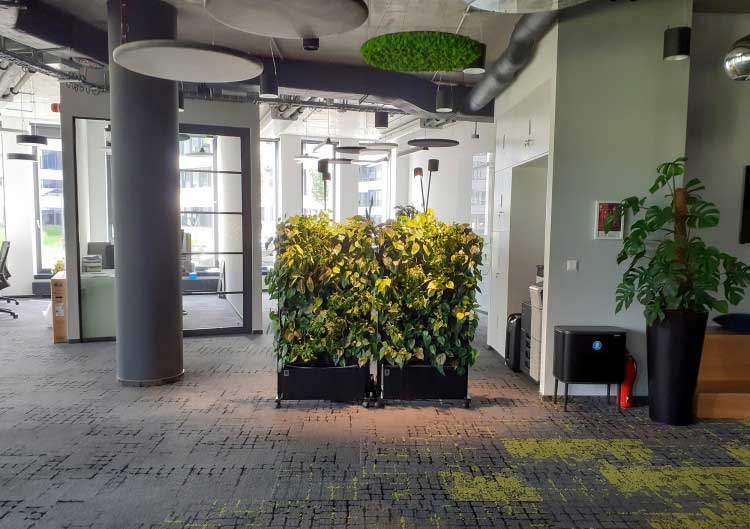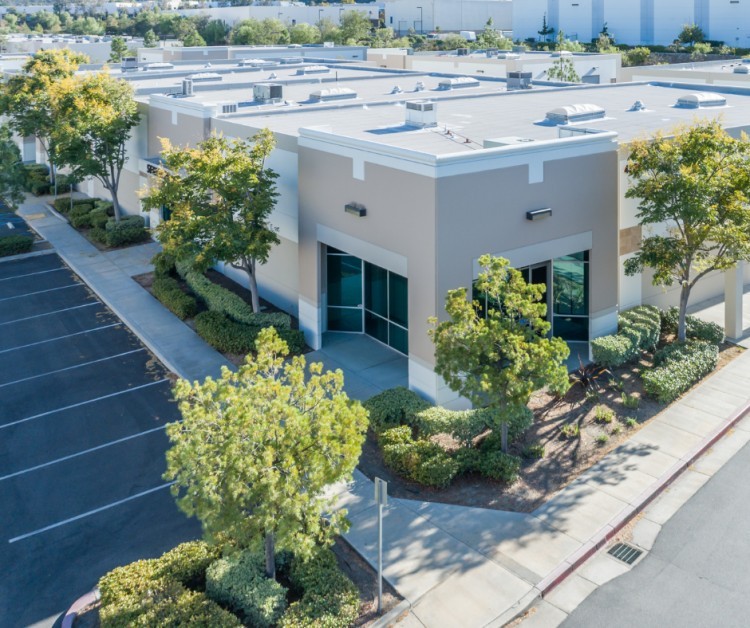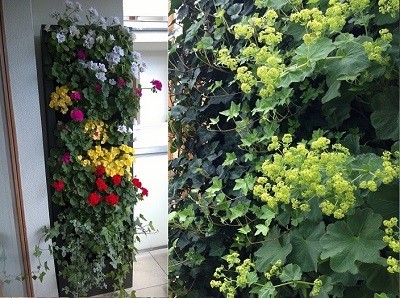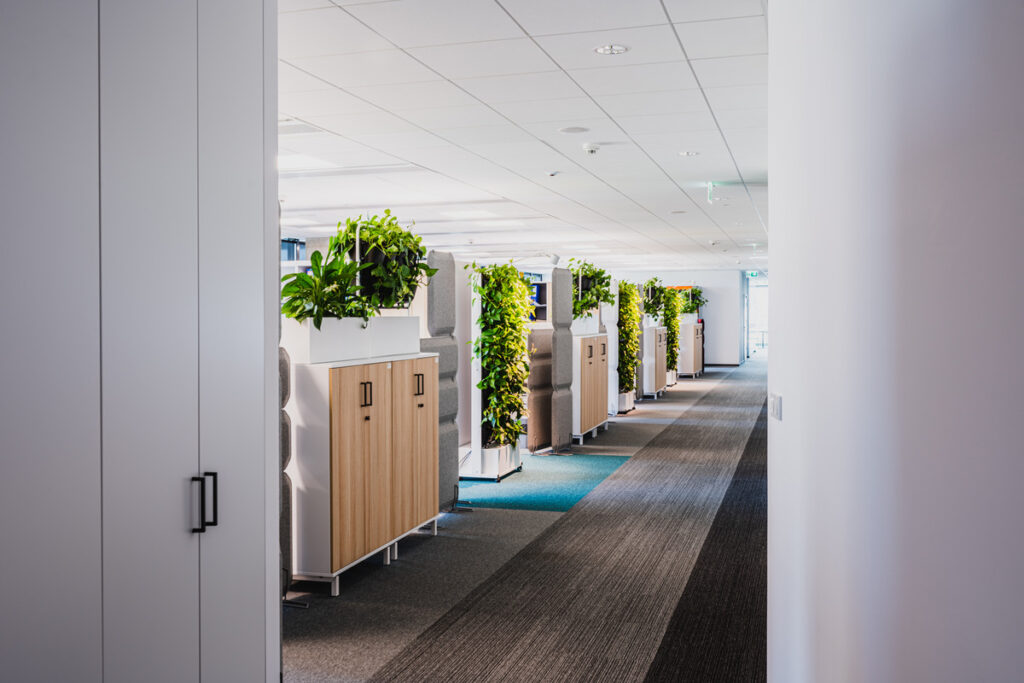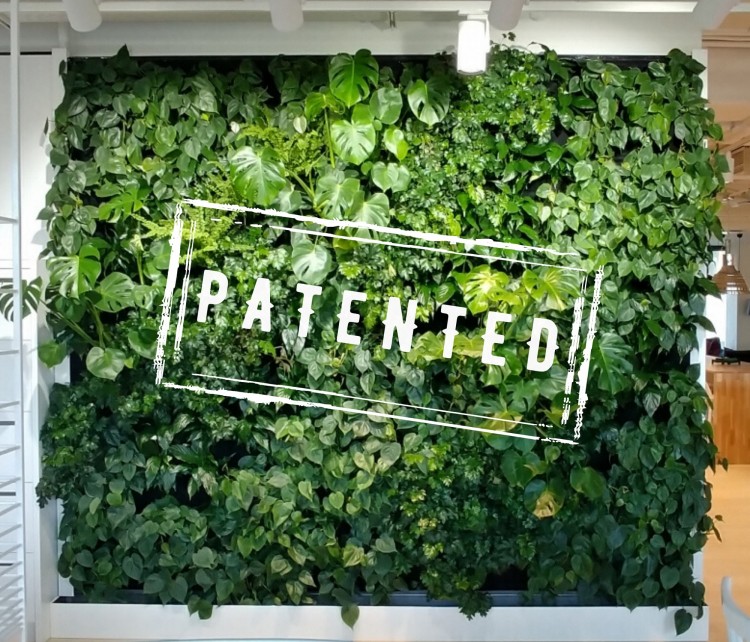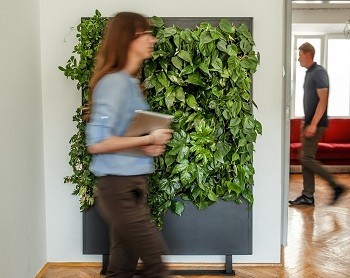Study 2019
The impact of 4Nature System living plant installations on office employees
Plants in close proximity have a positive effect on human health and well-being. They optimize the indoor microclimate, improve spatial perception, reduce stress levels, and increase creativity. We decided to verify this by analyzing the effects of vegetation in the form of our vertical gardens on office users.
The study on the impact of nature on office workers’ comfort was conducted between October 2018 and February 2019 in collaboration with the Polish Green Building Council and the Silesian University of Technology. For three months, we observed companies located in Katowice and Warsaw, in class A, A+, and A++ buildings equipped with HVAC systems.

10 companies
Ikea, Skanska, Tetris, WSP Poland, Vastint, Keller Williams Poland, HB Reavis, JLL, Arc Interiors, Bank
Buildings A, A+, A++
Buildings with HVAC system
240 polls
That’s how many surveys we conducted in each of the 3 stages of the study.
12 weeks of research
We studied how people felt before introducing 4Nature Basic plant systems, during their presence, and after their removal.
4Nature Basic
34 mobile, free-standing green partitions
1500 plants
15 plants per person
Over a period of 12 weeks, 10 large companies analyzed the impact of 4Nature System’s plant-based solutions on the indoor environment. We focused on the influence of live greenery on workspace conditions and on the needs and experiences of employees — individuals who spend most of their time in office settings.
We used 34 mobile, free-standing green partitions with 4Nature Basic plants (a total of 1500 plants). The report below presents the findings of this study: it confirms the positive effect of our vertical gardens on workplace comfort and environmental quality. Employees in green offices clearly reported more positive moods and better focus at work.
Technology used
To create the test green walls, we used the 4Nature System technology, which consists of modules made of recycled plastic and an automatic irrigation system.
The test walls were planted with species that are easy to grow and have beneficial properties for indoor environments: moisturizing, air-purifying, and temperature-regulating functions. These included, among others, Epipremnum aureum n’joy, Chlorophytum comosum, Epipremnum aureum, and Philodendron scandens.
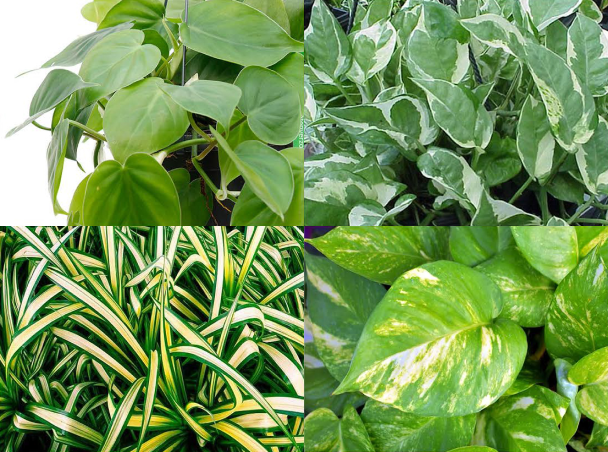
Three stages of the study
The study consisted of 3 stages and 4 anonymous surveys completed via an online form:
1|
2 weeks before introducing the plants
2|
2 and 6 weeks after introducing the plants
3|
2 weeks after removing the plants
Employee satisfaction level
The purpose of the survey was to assess employee satisfaction across 10 aspects of working in an office depending on the presence or absence of plants in their immediate surroundings.
1| BEFORE
2| DURING
3| AFTER
Summary of results
of employees noticed improved air quality
of respondents reported increased work efficiency
of people want to have plants within 2 meters of their workstation
confirmed improved work comfort
of employees reported better well-being and reduced stress
of respondents noticed improved office aesthetics
Opinions
“The more plants, the nicer it feels”
“We know we need plants… because we don’t have any”
Plants in the office:
“Warmer interior”
“Homely atmosphere”
Visual effect:
“Completely different air!”
“We argued less about the temperature”
Better office:
Want to know more?
Download the full report! Study 2019: The impact of 4Nature System’s living plant solutions on office employees
Study 2021
The impact of the 4Nature System on air humidity and employee well-being
An appropriate level of air humidity influences comfort in indoor spaces. This is especially important for office users, where dry air and air conditioning are a common nuisance for workers. We decided to investigate whether plant life can help employers maintain a proper level of air moisture. At the same time, we wanted to explore whether this truly matters to employees.
At our request, a team from the Silesian University of Technology conducted a survey-based study on changes in well-being among office users depending on air humidity levels in the indoor environment. The study lasted 30 weeks and was carried out in five office buildings (class A, A+, and A++) located in Warsaw.

5 companies
Volvo Trucks Poland, Brain Embassy, Tetris, and 2 companies from the banking sector
A, A+, A++ buildings
Buildings equipped with HVAC systems
360 surveys
This is how many surveys we conducted during the study, involving 86 participants
30 weeks of research
We studied office workers’ perceptions of air humidity
4Nature Smart Green
25 furniture elements with live greenery
600 plants
7 plants per person
Three stages of the study
Impact of the 4Nature System on air humidity and employee well-being” was divided into 3 stages:
1|
Initial condition
In the first stage, the current conditions in the offices were assessed.
2|
Introduction of humidifiers
Raising the air humidity level
3|
Live greenery
Replacing humidifiers with Smart Green furniture
Study results

Optimal air humidity is very important for work comfort.
Respondents rated their well-being, focus, productivity, and air quality higher when humidity levels were increased. The best results during the study were observed in the stage when we introduced furniture with vertical greenery.
Acceptability of thermal conditions
Perceptions and preferences of users regarding thermal conditions
Measurement conditions using air humidification systems were highly accepted by respondents in terms of thermal comfort (93%). This marks an improvement over the initial situation, where 84% of people declared acceptance of thermal conditions. The highest acceptance rate — 96% — was achieved when vertical gardens were introduced.

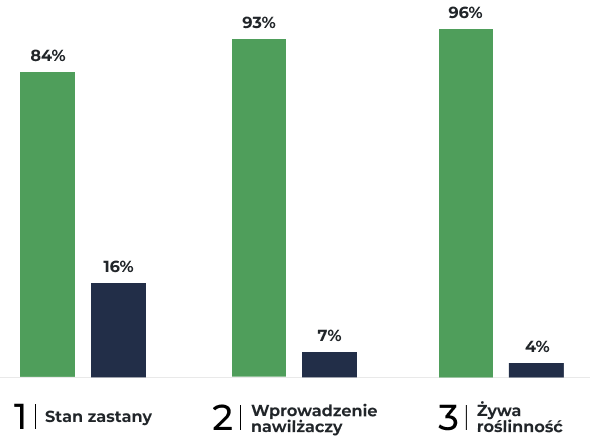
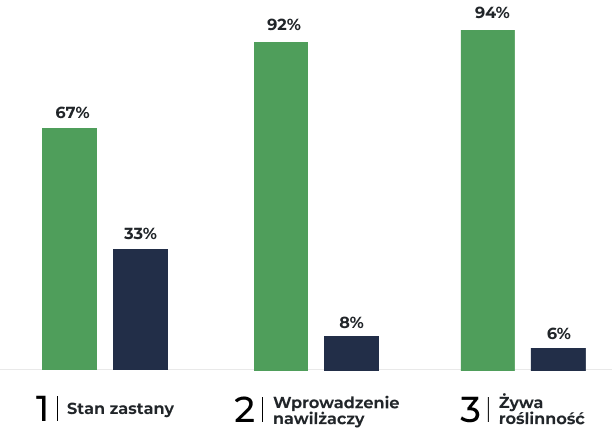
Acceptability of air humidity
Perceptions and preferences of users regarding air humidity
Measurement conditions using air humidification systems were highly accepted by respondents in terms of air humidity (92%). This marks an improvement over the initial situation, in which 67% of respondents declared acceptance of air humidity levels. The highest acceptance rate — 94% — was observed when vertical gardens were introduced.

Acceptability of air quality
Air quality
Indoor air quality was rated highest when using humidifiers (87%) and vertical gardens (93%). Before the intervention, the satisfaction rate was 75%, which does not meet the indoor air quality standards requiring a minimum of 80%. Perceived air quality was rated as “average” in measurement conditions A and B, while the highest acceptability was observed with vertical gardens.

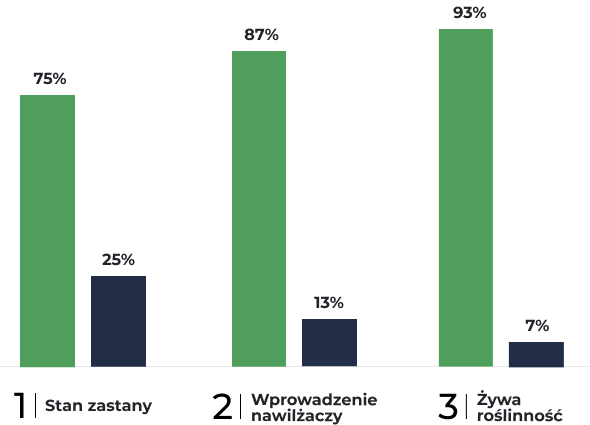
Well-being

The impact of humidity on respondents’ well-being was studied through questions assessing their self-perceived levels of drowsiness, concentration, and productivity.
The highest indicators were recorded with the installation of vertical gardens.
Perceived level of concentration
Perceptions and preferences of users regarding concentration levels
Concentration levels were rated highest when humidifiers (96%) and vertical gardens (97%) were used. Before the intervention, the satisfaction rate was 79%. The perceived increase in concentration occurred alongside the implementation of solutions that raised humidity and air quality levels.


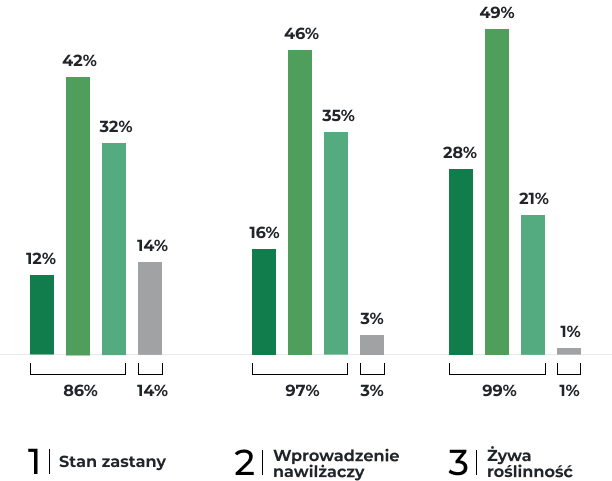
Perceived productivity
Perceptions and preferences of users regarding productivity levels
Productivity levels were rated highest when humidifiers (97%) and vertical gardens (97%) were used. Before the intervention, the satisfaction rate was 86%. The perceived increase in productivity occurred alongside the implementation of solutions that improved humidity and air quality.

Plants change how people perceive space and interiors

When we introduced furniture with live plants — 4Nature Smart Green in the third stage of the study — we did not increase air humidity again, we simply replaced the humidifiers with plants in our system. However, the feeling of comfort was highest when greenery was present in the immediate surroundings of the respondents. This shows that we perceive spaces with plants more positively than those without, even though both have exactly the same indoor environmental parameters.
Satisfaction with the number of plants in the immediate environment
The installation of vertical gardens led to an increase in respondents’ satisfaction with the number of plants in the studied space — from 54% to 94%. Additionally, the use of furniture with vertical gardens made it possible to separate different teams working together in shared open space areas, which contributed to greater user satisfaction with the given space.

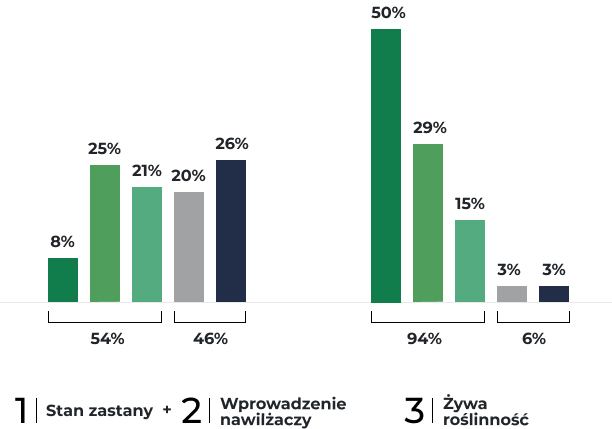
The impact of plants on air humidification
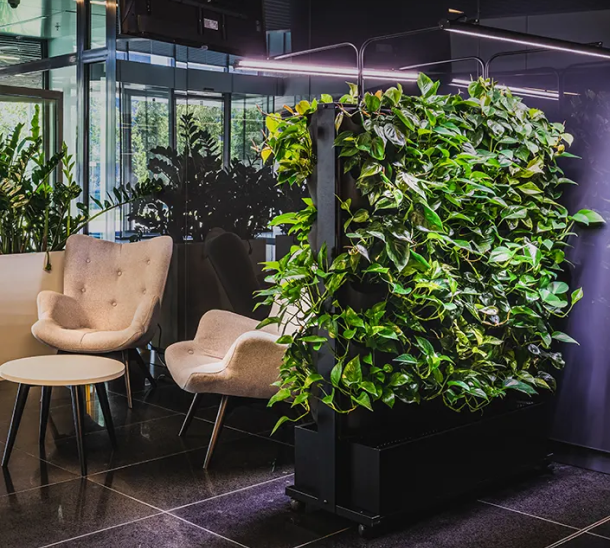
Air humidification is an important and at the same time costly aspect of operating modern offices. Building managers or employers often maintain only a minimal humidity level of around 30% due to cost-saving considerations. But what if plants could help with this?
At our request, a team from the Silesian University of Technology conducted a study of selected plant species in terms of their ability to humidify the air. We tested 5 species: Philodendron scandens, Chlorophytum comosum, Epipremnum aureum, Aglaonema ‘Silver Queen’, and Schefflera arboricola (a total of 100 specimens).
Thanks to our 4Nature Smart Green plant furniture system, we found it is possible to achieve specific air humidity parameters. Together with the Silesian University of Technology, we developed a calculator that allows us to determine the exact number of plants needed in a given space to raise air humidity by a specific percentage.
Want to know more?
Study 2021: The impact of the 4Nature System on air humidity and employee well-being















